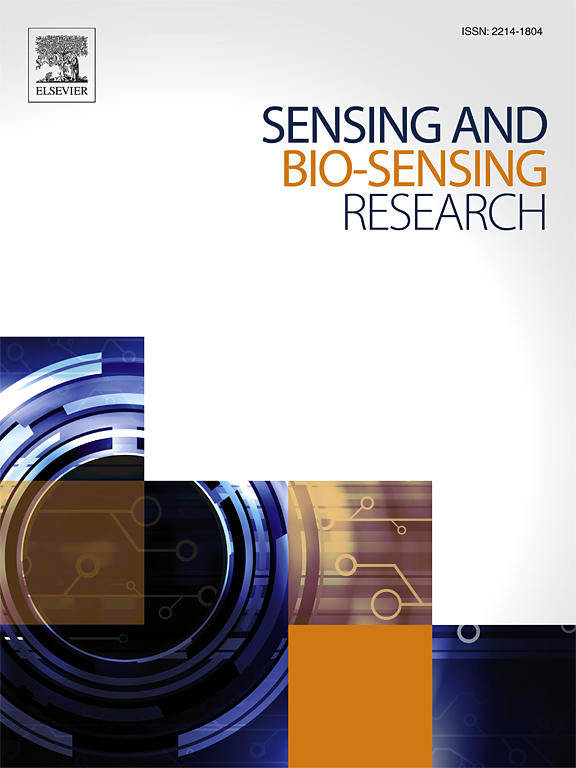Green synthesis of biocompatible fluorescent carbon dots from bitter gourd for effective metal sensing and biological applications
IF 5.4
Q1 CHEMISTRY, ANALYTICAL
引用次数: 0
Abstract
Highly fluorescent Carbon dots (C-dots) were synthesized from the Bitter Gourd by simple hydrothermal method without the addition of any surfactant or additives. The optical properties, luminescence, phase formation and crystal structure were measured using UV–Visible spectroscopy (UV–Vis), Photoluminescence (PL), X-ray diffraction (XRD) and Transmission electron microscopy (TEM) by varying the medium from acidic to basic by changing its pH (2−12) and temperature range (180-300οC) to assess the exact nature and properties of the synthesized C-dots. The synthesized C-dots have wide range of applications from metal sensing to bioimaging and optoelectronics. The antimicrobial properties of the prepared C-dots were also analyzed using Klebsiellapneumoniae and Staphylococcus aureus microbes and found that the prepared C-dots have better antimicrobial activity in both microbes with better efficiency due to its smaller size. The challenges and perspectives of the synthesized C-dots from Bitter Gourd were also discussed.
用苦瓜绿色合成生物相容性荧光碳点,用于有效的金属传感和生物应用
以苦瓜为原料,在不添加任何表面活性剂和添加剂的情况下,采用简单水热法合成了高荧光碳点(c点)。利用紫外可见光谱(UV-Vis)、光致发光(PL)、x射线衍射(XRD)和透射电子显微镜(TEM)对合成的C-dots的光学性能、发光性能、相形成和晶体结构进行了测量,并通过改变pH值(2 ~ 12)和温度范围(180 ~ 300 o o c)从酸性变为碱性来评估合成的C-dots的确切性质和性能。合成的c点具有广泛的应用,从金属传感到生物成像和光电子。对制备的C-dots进行了肺炎克雷伯菌和金黄色葡萄球菌的抗菌性能分析,发现制备的C-dots由于体积小,对两种微生物的抗菌活性都较好,效率也较高。讨论了从苦瓜中合成c点的挑战和前景。
本文章由计算机程序翻译,如有差异,请以英文原文为准。
求助全文
约1分钟内获得全文
求助全文
来源期刊

Sensing and Bio-Sensing Research
Engineering-Electrical and Electronic Engineering
CiteScore
10.70
自引率
3.80%
发文量
68
审稿时长
87 days
期刊介绍:
Sensing and Bio-Sensing Research is an open access journal dedicated to the research, design, development, and application of bio-sensing and sensing technologies. The editors will accept research papers, reviews, field trials, and validation studies that are of significant relevance. These submissions should describe new concepts, enhance understanding of the field, or offer insights into the practical application, manufacturing, and commercialization of bio-sensing and sensing technologies.
The journal covers a wide range of topics, including sensing principles and mechanisms, new materials development for transducers and recognition components, fabrication technology, and various types of sensors such as optical, electrochemical, mass-sensitive, gas, biosensors, and more. It also includes environmental, process control, and biomedical applications, signal processing, chemometrics, optoelectronic, mechanical, thermal, and magnetic sensors, as well as interface electronics. Additionally, it covers sensor systems and applications, µTAS (Micro Total Analysis Systems), development of solid-state devices for transducing physical signals, and analytical devices incorporating biological materials.
 求助内容:
求助内容: 应助结果提醒方式:
应助结果提醒方式:


